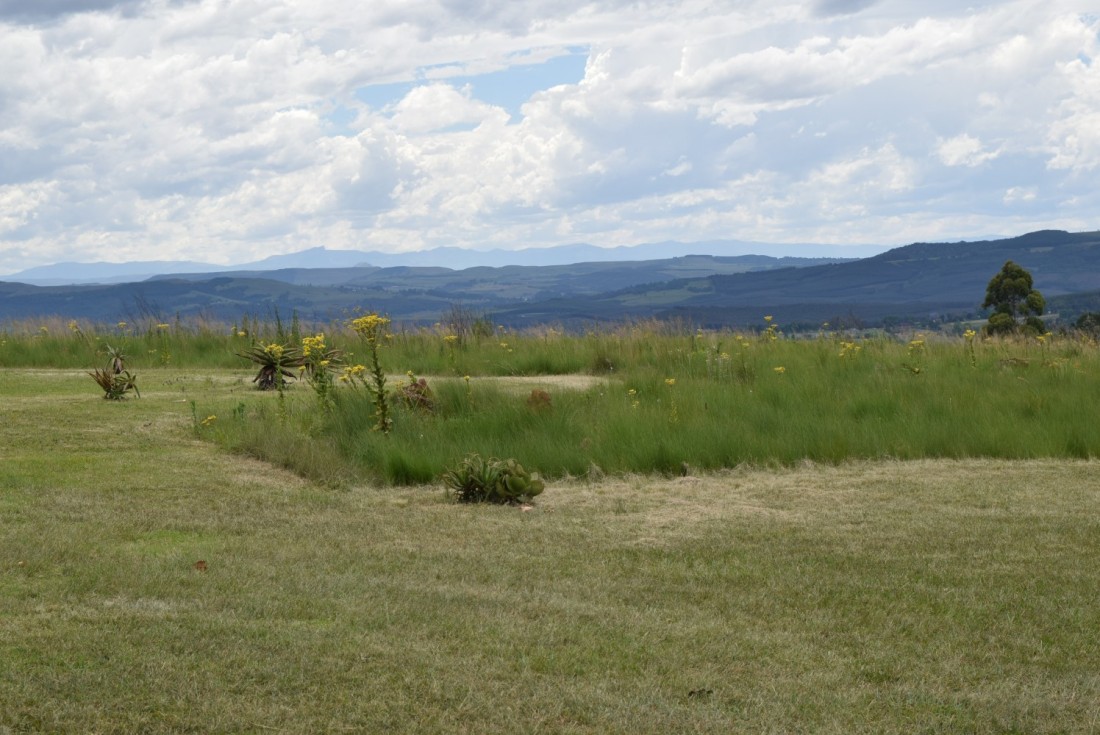
The Inland Branch of the Botanical Society went on a grassland walk for the end-of-year outing. We had lunch at the cafe afterwards. What a decadent meal! It is fashionable in some areas to mow the lawn up to the grassland and not plant trees or shrubs which would otherwise hide the beautiful view.
Pachycarpus natalensis (ishongwe elibomvu elikhulu) (Family Apocynaceae) here with two colour forms. The flowers are large 20mm in diameter. These flowers are not seen if cattle graze the area.
Two other species in the same Milkweed family are this Asclepias cucullata (no flower shown) and Vulnerable and endemic Sisyranthus fanniniae. All Milkweeds are feed plants of the African Monarch butterfly larva shown here.
Another family of forbs common in these grasslands which rely of fire to maintain their biodiversity are the Legumes. Above is Indigofera hilaris (English common name: red Indigo; Zulu: isikhubabende).
Eriosema distinctum (Scarlet Eriosema; ubangalala olukhulu) is very common early flowering legume forming large clones (one plant spreading underground over a wide area) and quite widespread across the KZN Midlands. The yellow legume is a Leobordea species (inhlamvusenhla).
Also common and forming large spreading plants is Tephrosia macropoda (Creeping Tephrosia, ilozane). We also found the white flowering form.
An even bigger family that inhabits grasslands is the Asteraceae (or composites). Senecios (above left) and Helichrysum (above right) make the bulk of the genera. Click on the photos to get species names. Senecios are sometimes blue or purple like this S. erubescens below.
The last one is Sphagneticola which is an exotic garden escape and has become an invasive alien.
Other pretty forbs that were flowering were this Rothera hirsuta (Wild Violet; usikisiki) and Polygala ohlendorfiana (umanqandi).
Our grasslands contain a lot of bulbs (monocots). Here is a selection:
Boophone disticha (Fan tail; incwadi) and Ledebouria (squill; isikholokotho).
Some orchids: Orthochilus leontoglossus (yellow) and Orthochilus foliosus (green).
There may be up to 6 or 7 species of Hypoxis in a small area:
There were of number early flowering grasses. Melinus nerviglumis (Bristle leaf Red Top) is common in many grasslands. Rendlia altera (Mahem’s Crest) is not so common.
References: Pooley Wildflowers; Orchids of SA; Grasses of Southern Africa; iNaturalist.



































